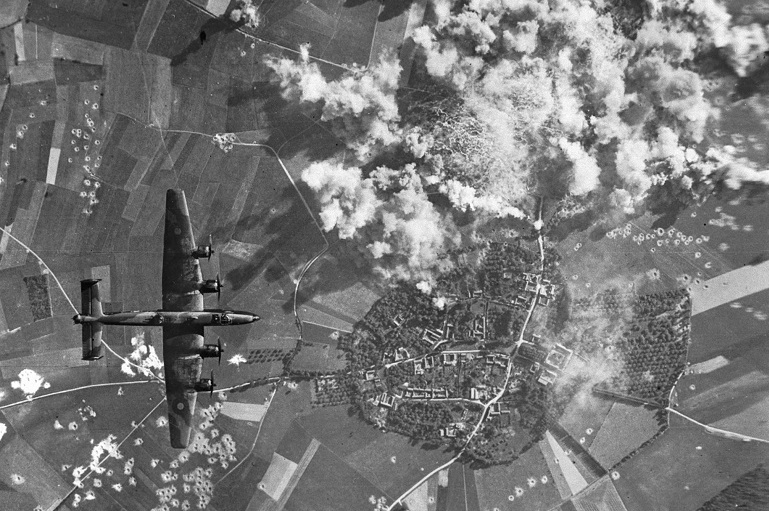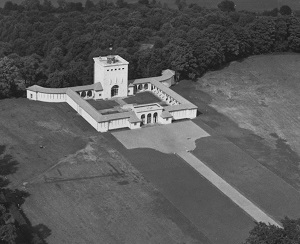The Second World War (1939-1945) - part 21
FOCUS ON… D-DAY

A Halifax bomber flies over the French countryside shortly after D-Day.
D-Day: June 6, 1944. It was the greatest amphibious landing in history.
The invasion of Normandy, known as Operation Overlord, was commanded by General Dwight Eisenhower. Allied forces stormed five beaches on the coast of France with the Canadians coming ashore at Juno Beach.
In the months leading up to the invasion, the Royal Canadian Air Force (RCAF) was involved in bombing key targets in the area. Just before the invasion began, RCAF Lancasters from No. 6 (Bomber) Group dropped tons of bombs on German coastal defences. In all, the RCAF had 42 operational squadrons, including fighter and bomber, overseas on D Day; 39 either flew sorties or were on standby. Seven aircraft were lost, and 20 RCAF members were killed during operations in support of the landings.
The invasion proved to be a success. Within days the Allies had established a beachhead on Normandy and begun their trek to Berlin and victory.
FOCUS ON… THE RUNNYMEDE MEMORIAL

The Runnymede Memorial in 1953.
During the Second World War more than 116,000 British Commonwealth airmen and airwomen gave their lives in service. More than 17,000 of these were members of the RCAF, or Canadians serving with the Royal Air Force (RAF).
Approximately one third have no known grave. Their 20,450 names, including 3,072 Canadians, are inscribed on the Runnymede Memorial, which was unveiled on October 17, 1953, west of London, England.